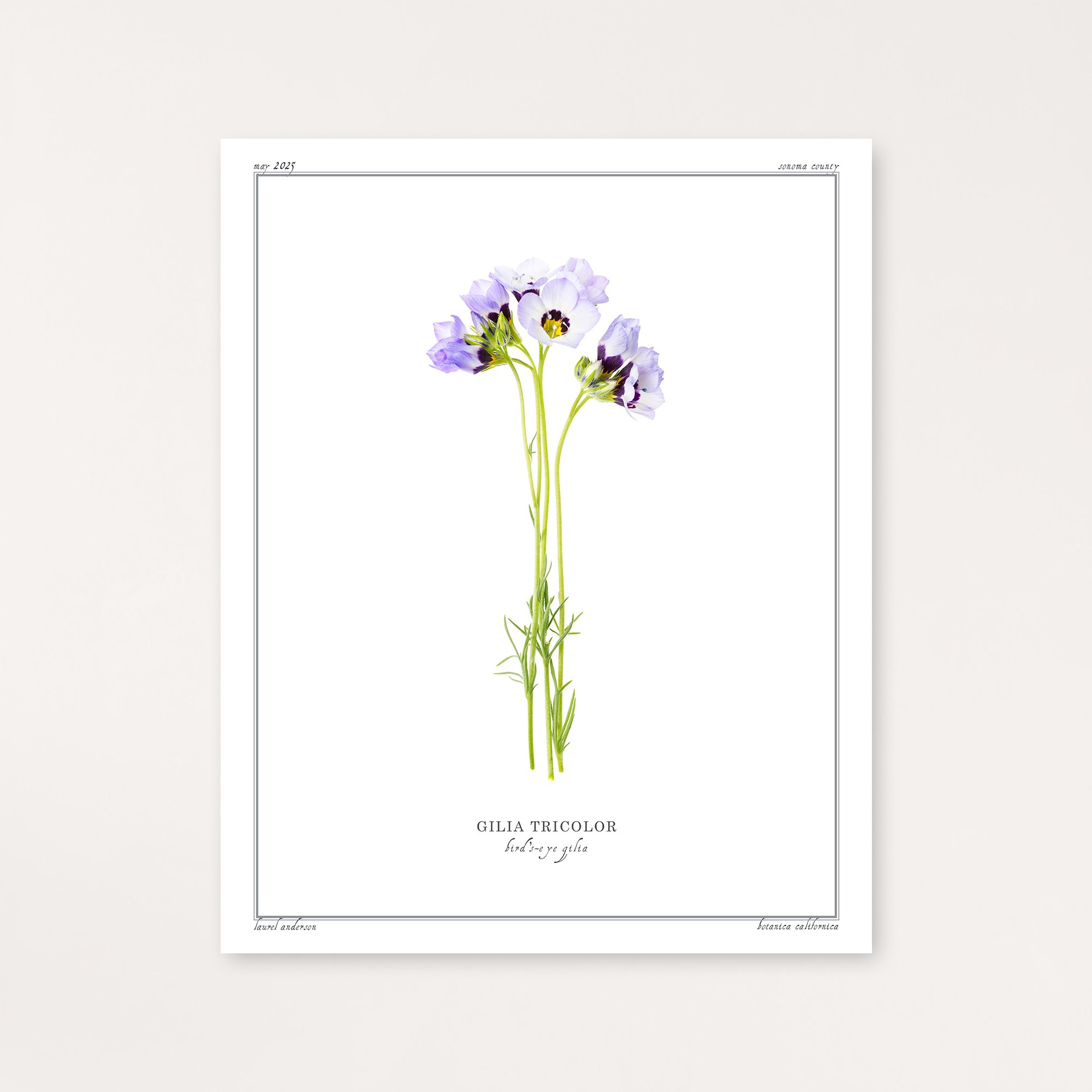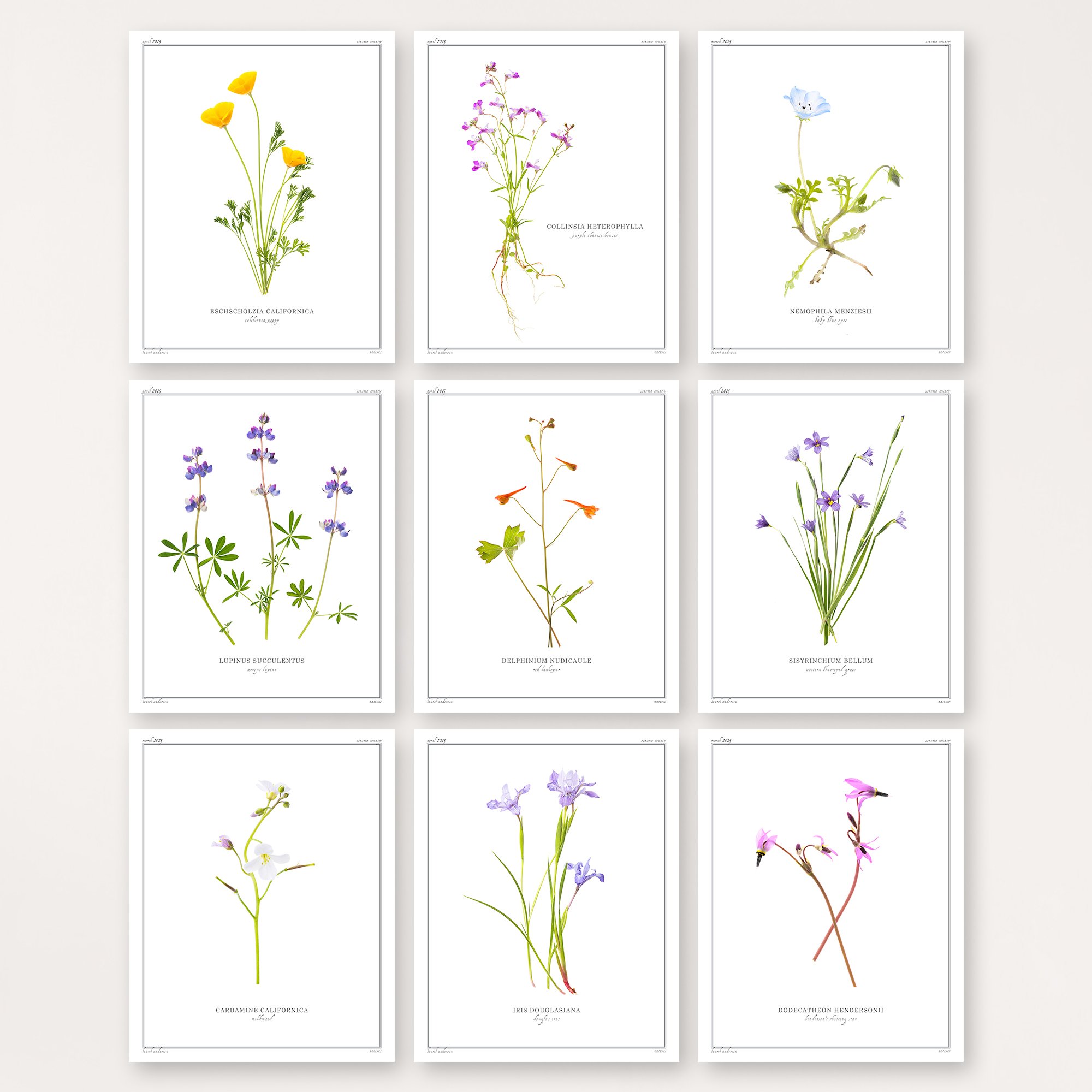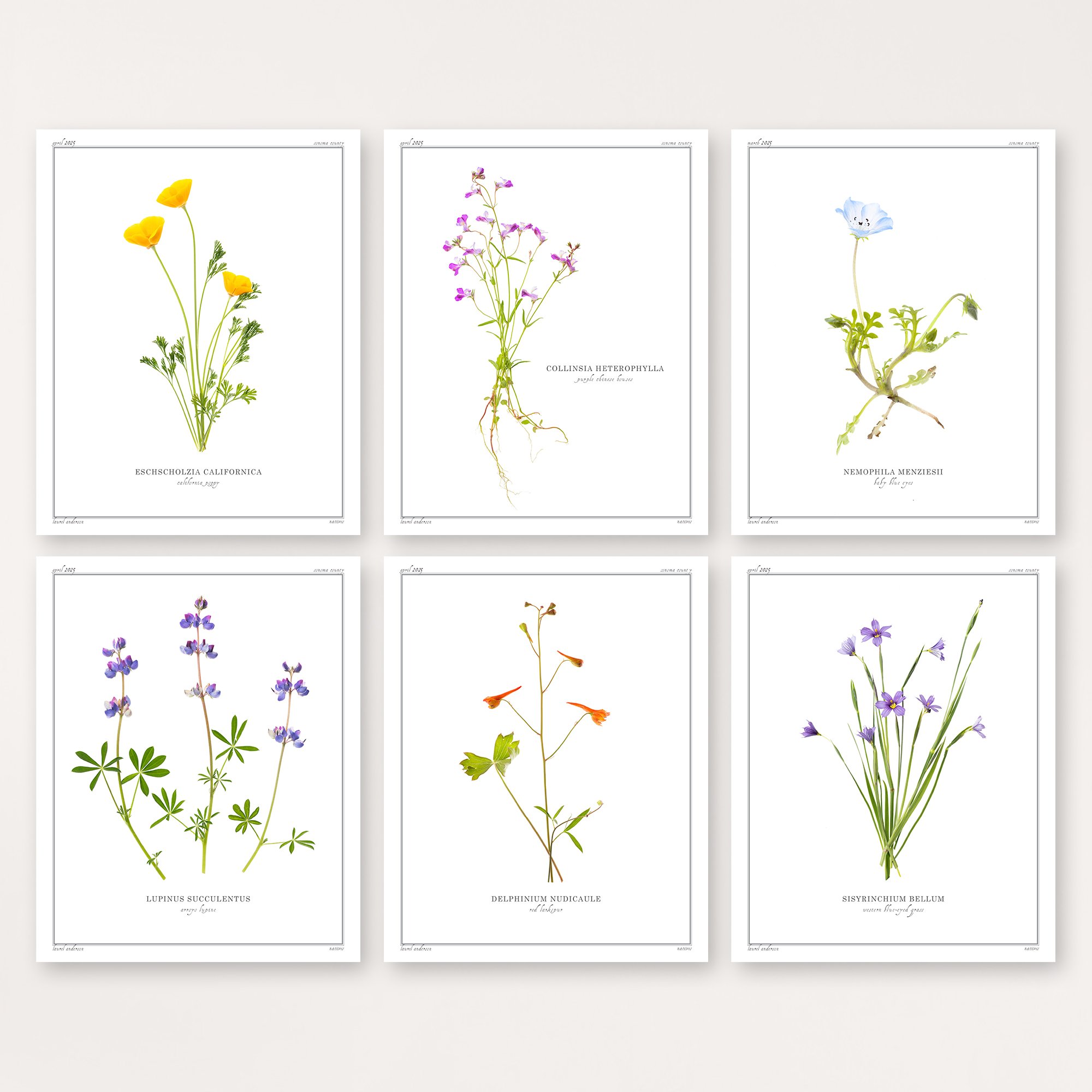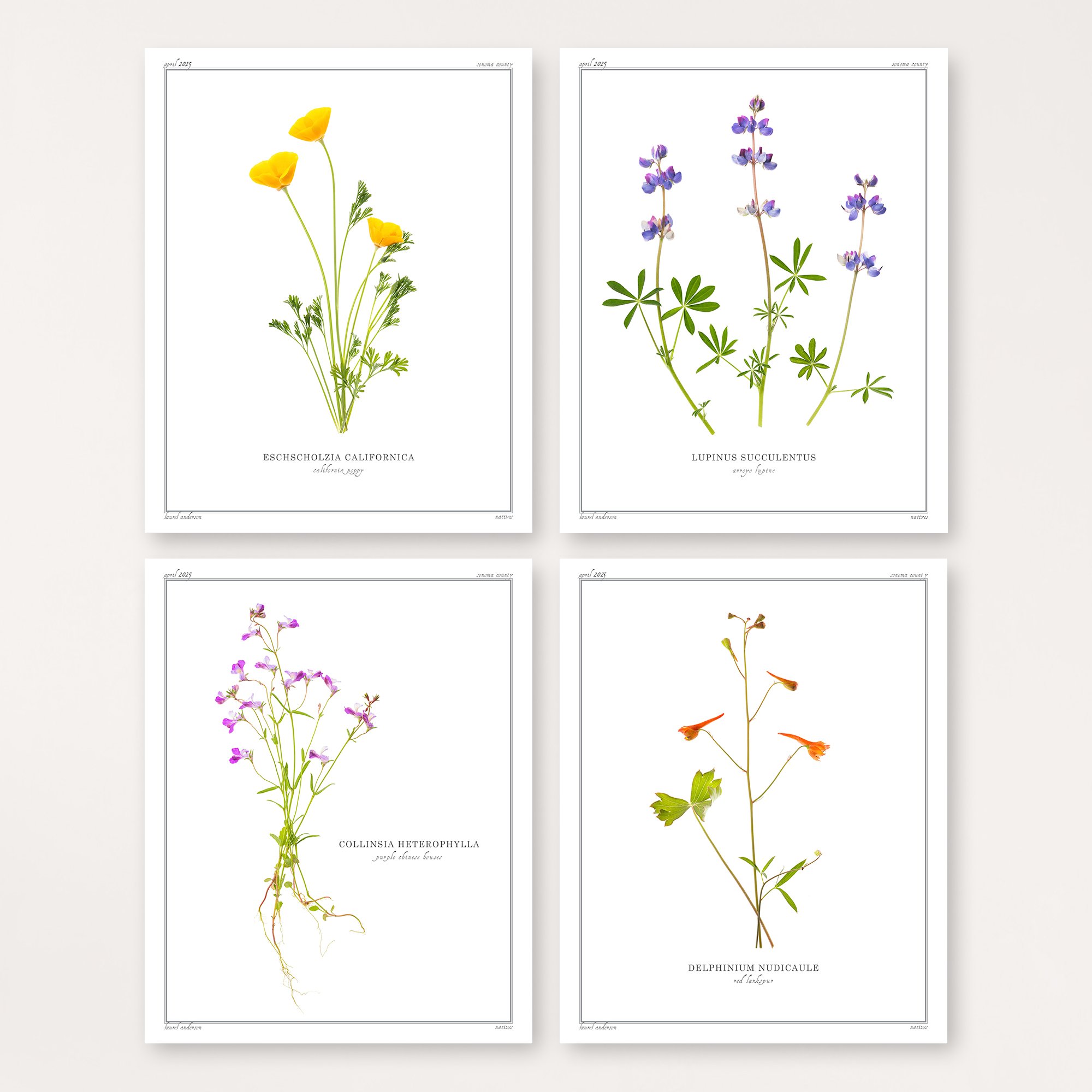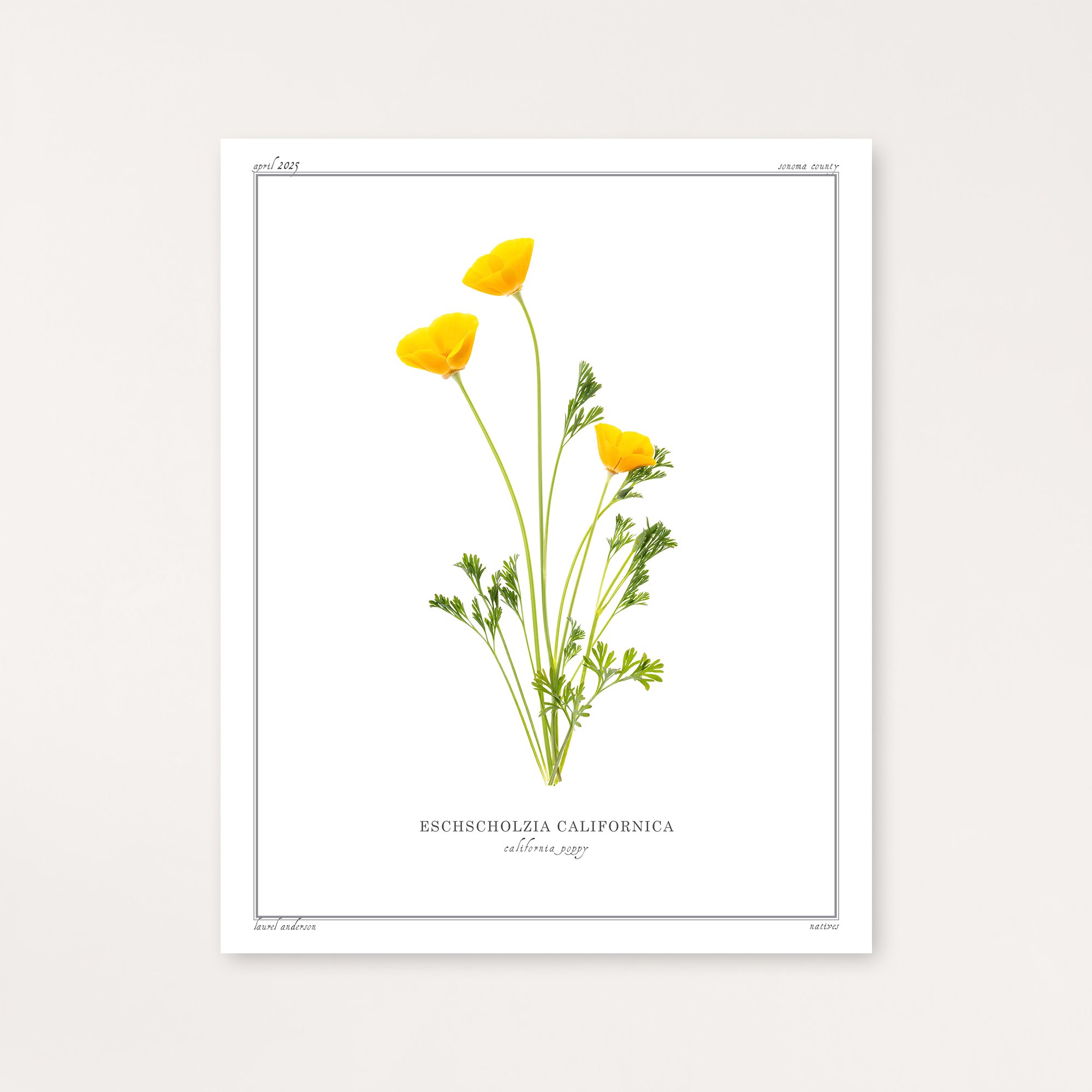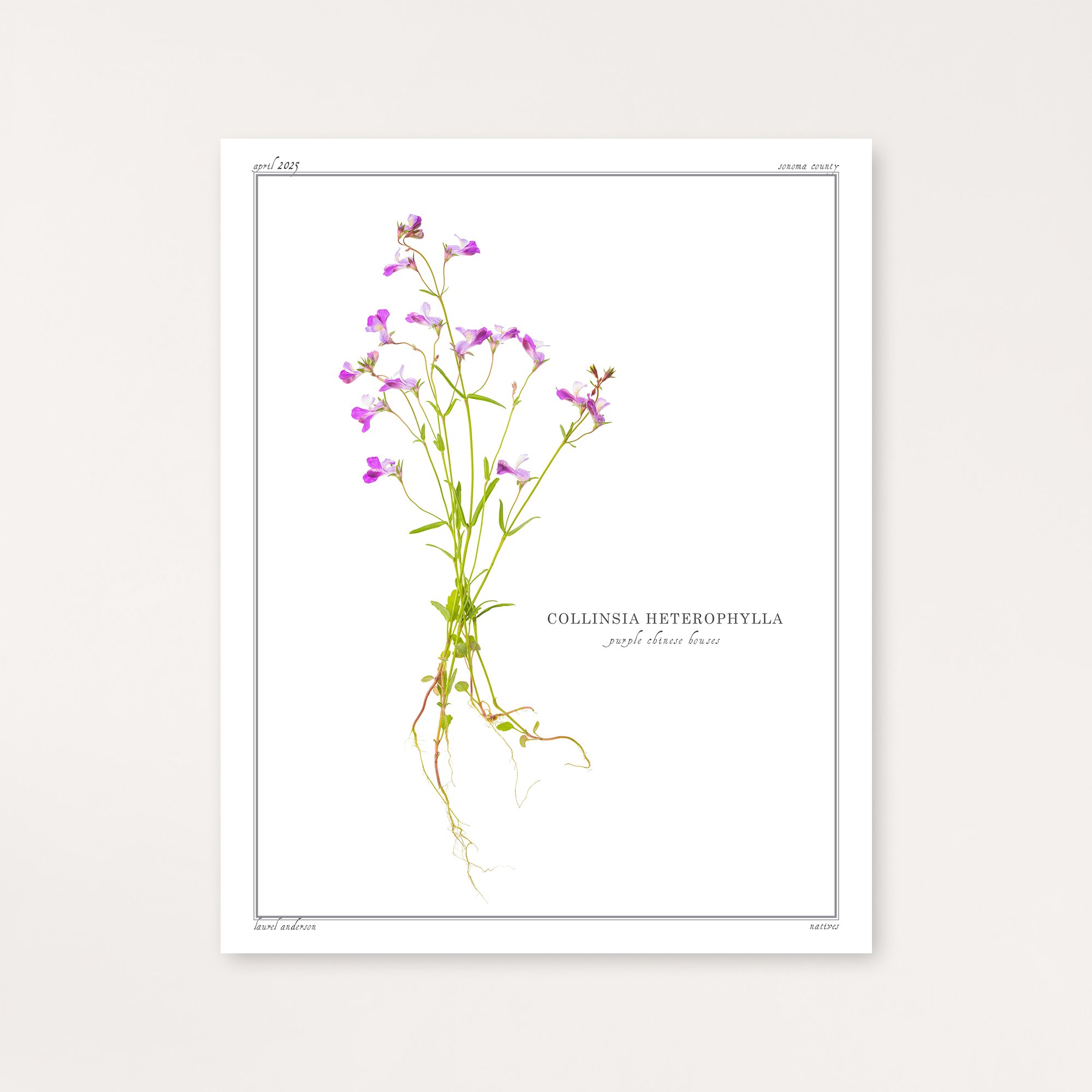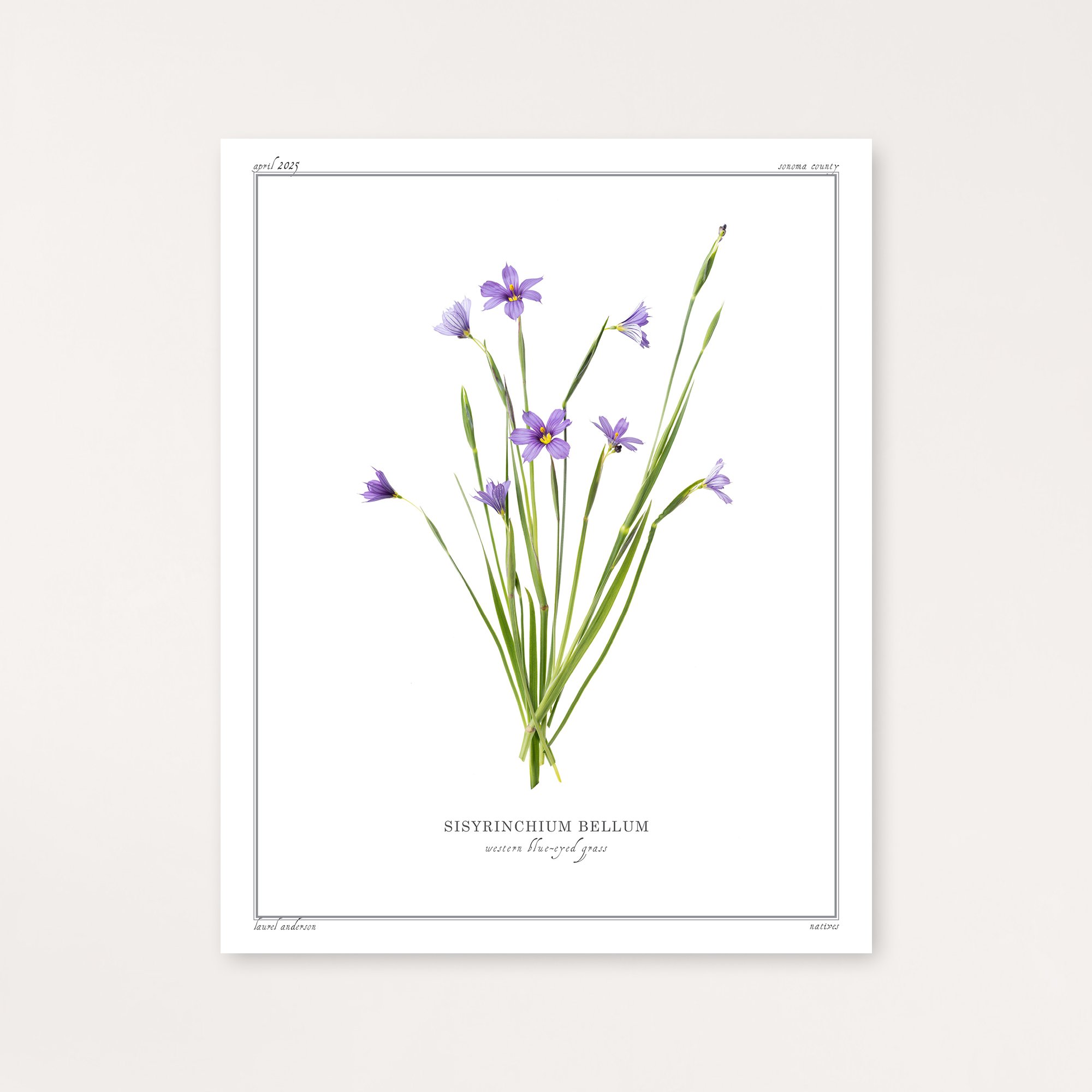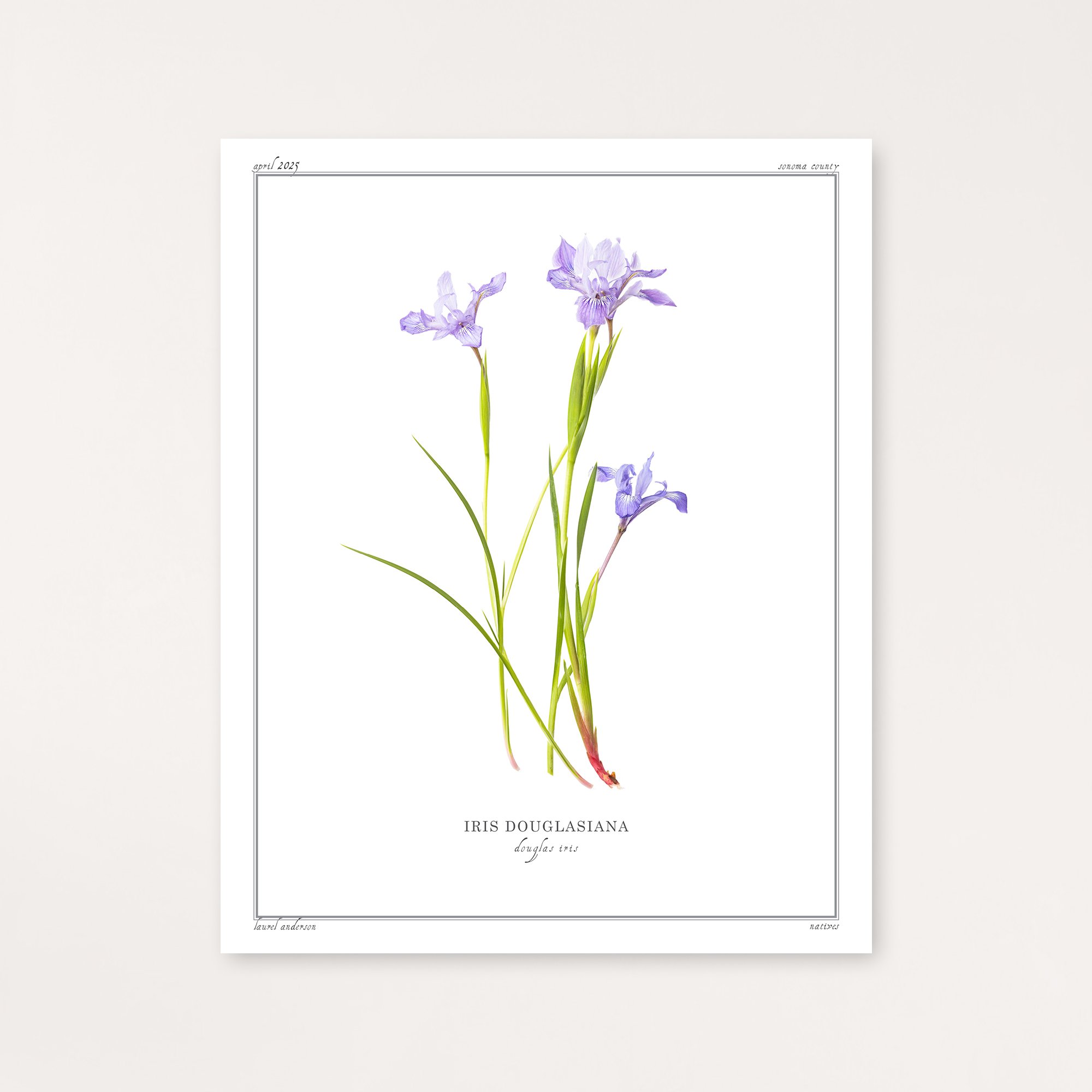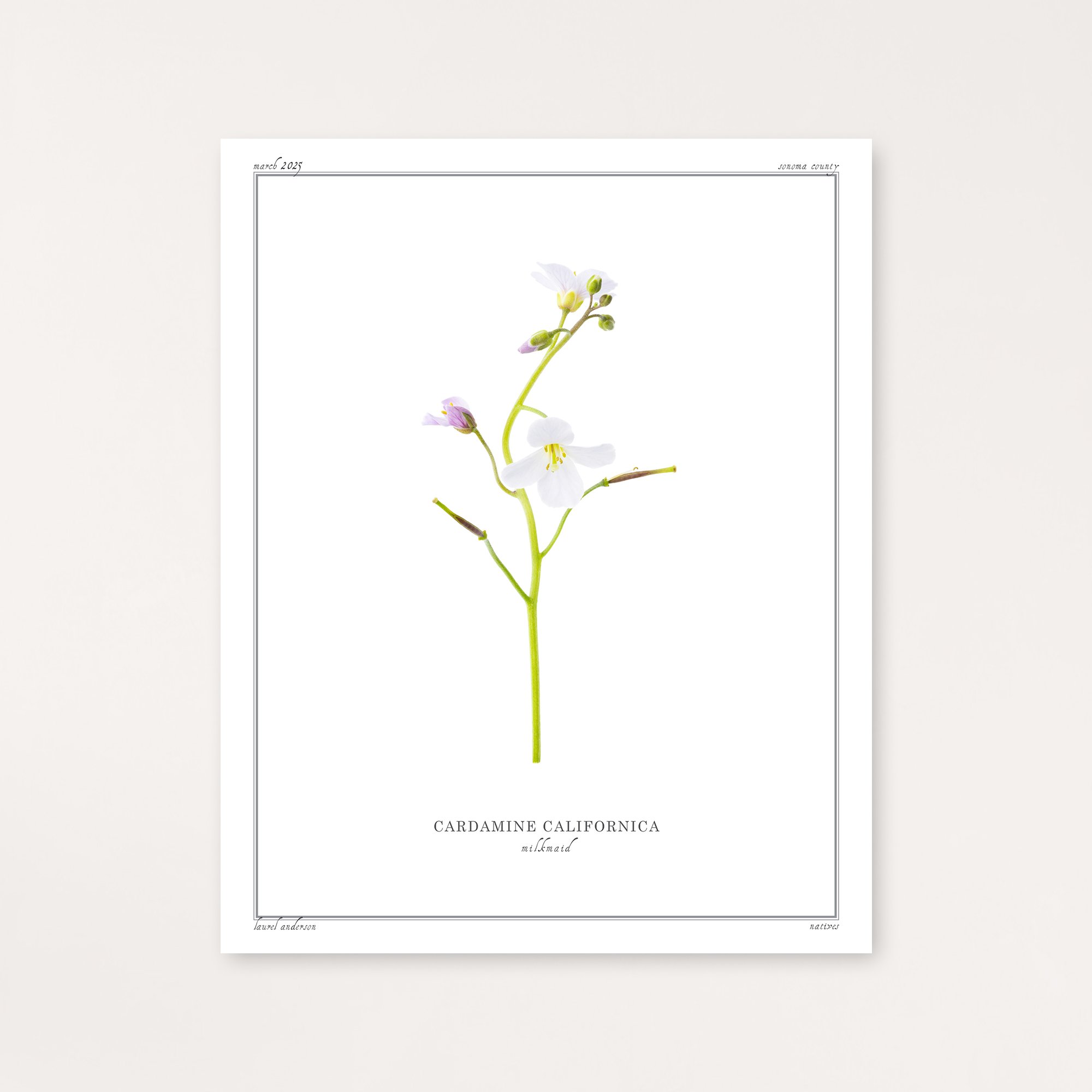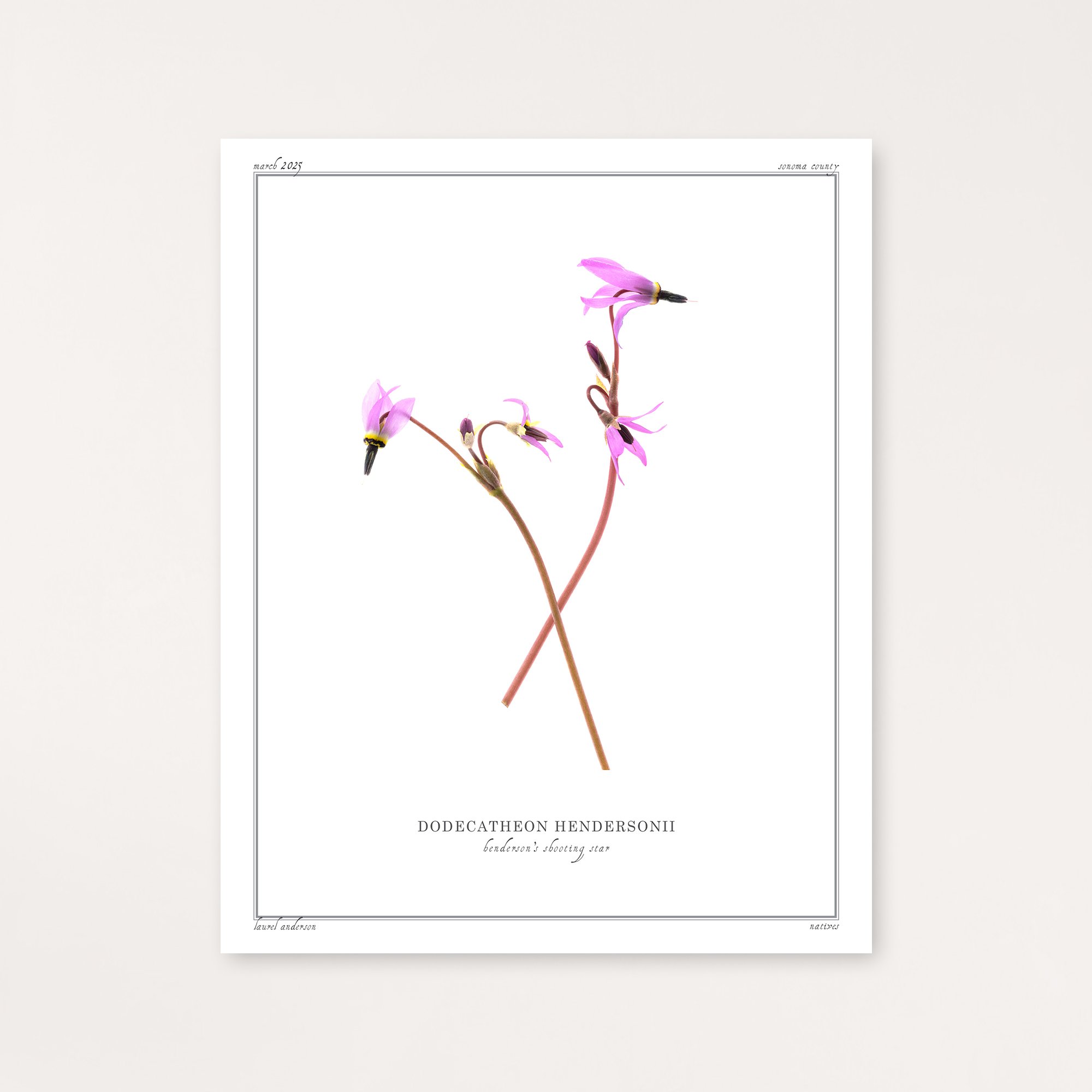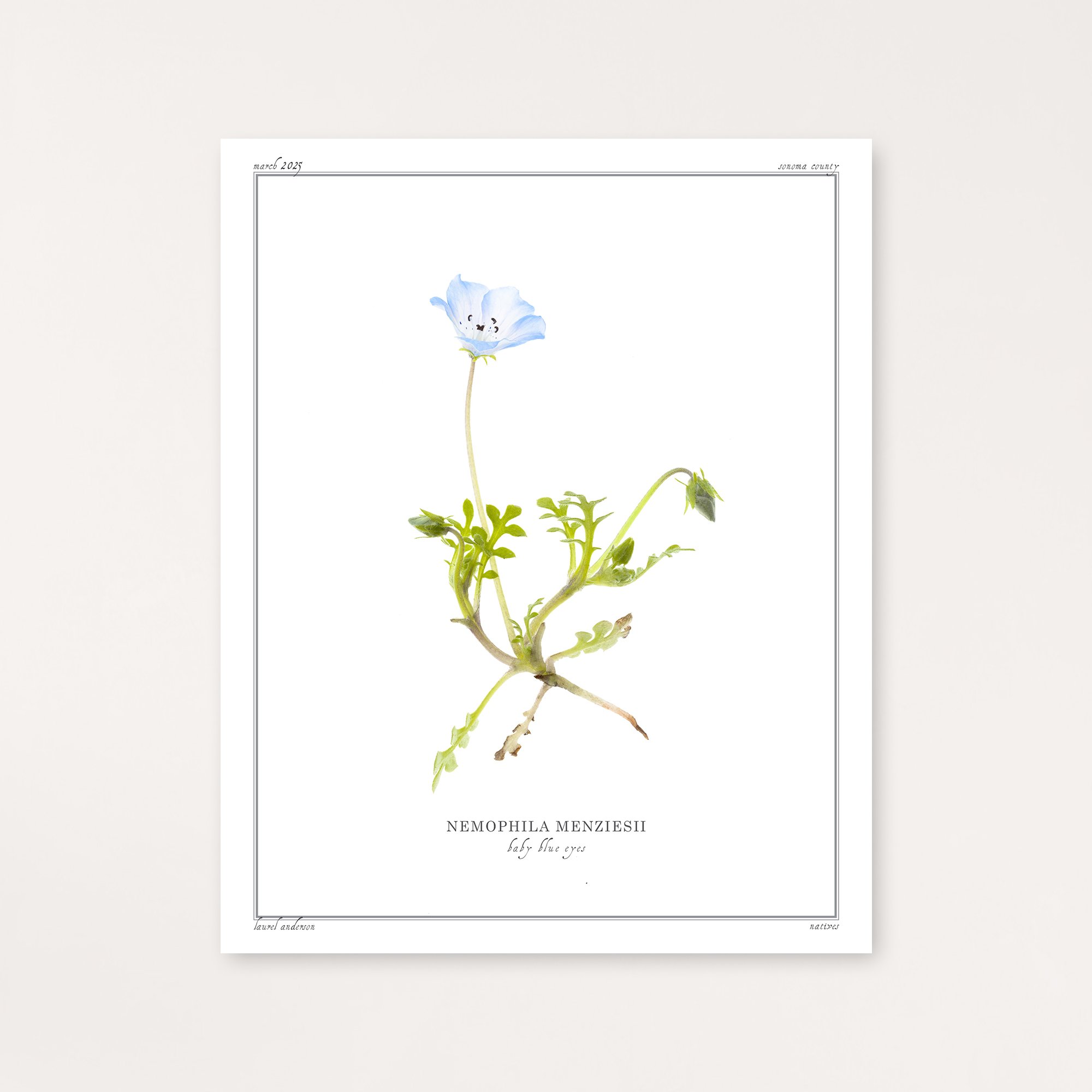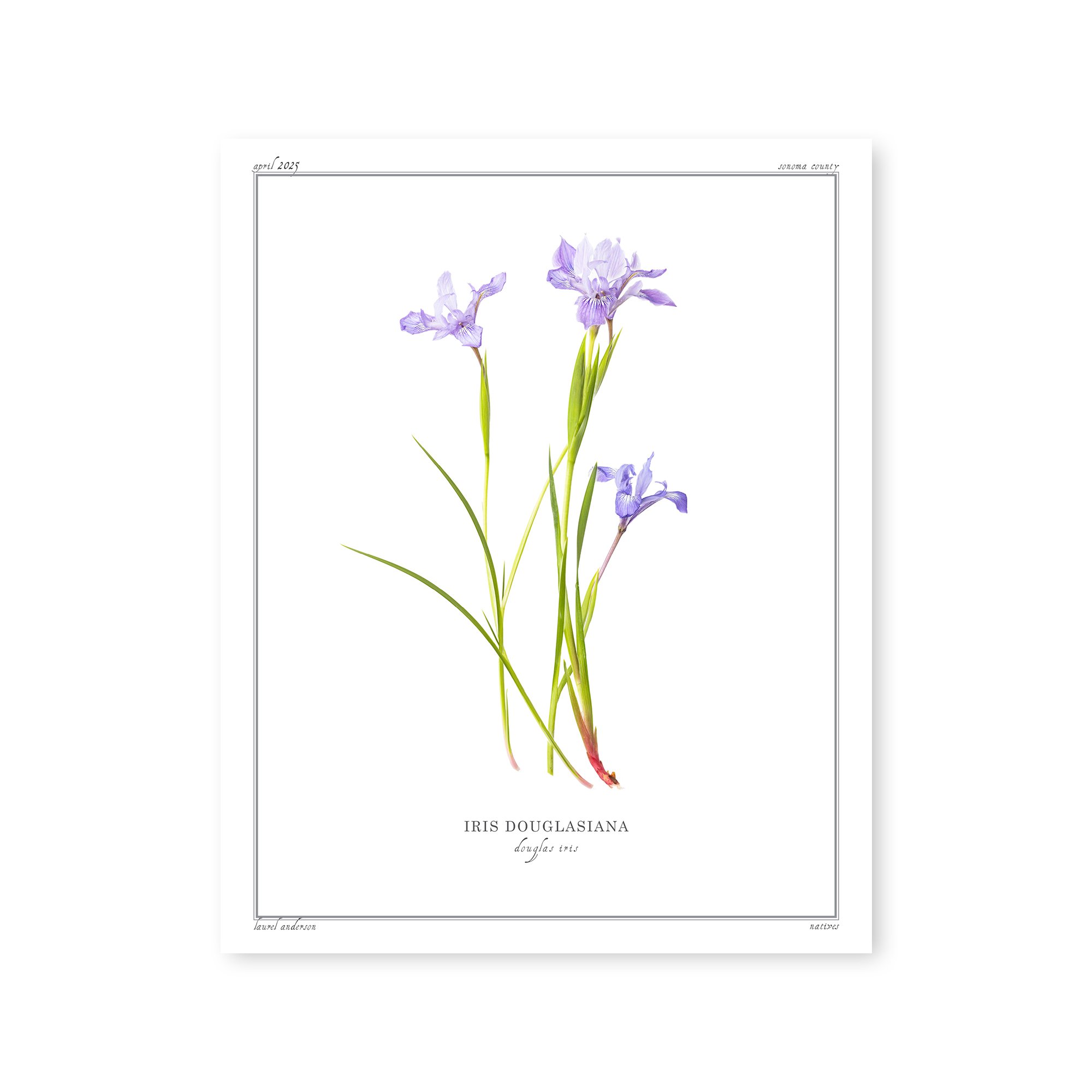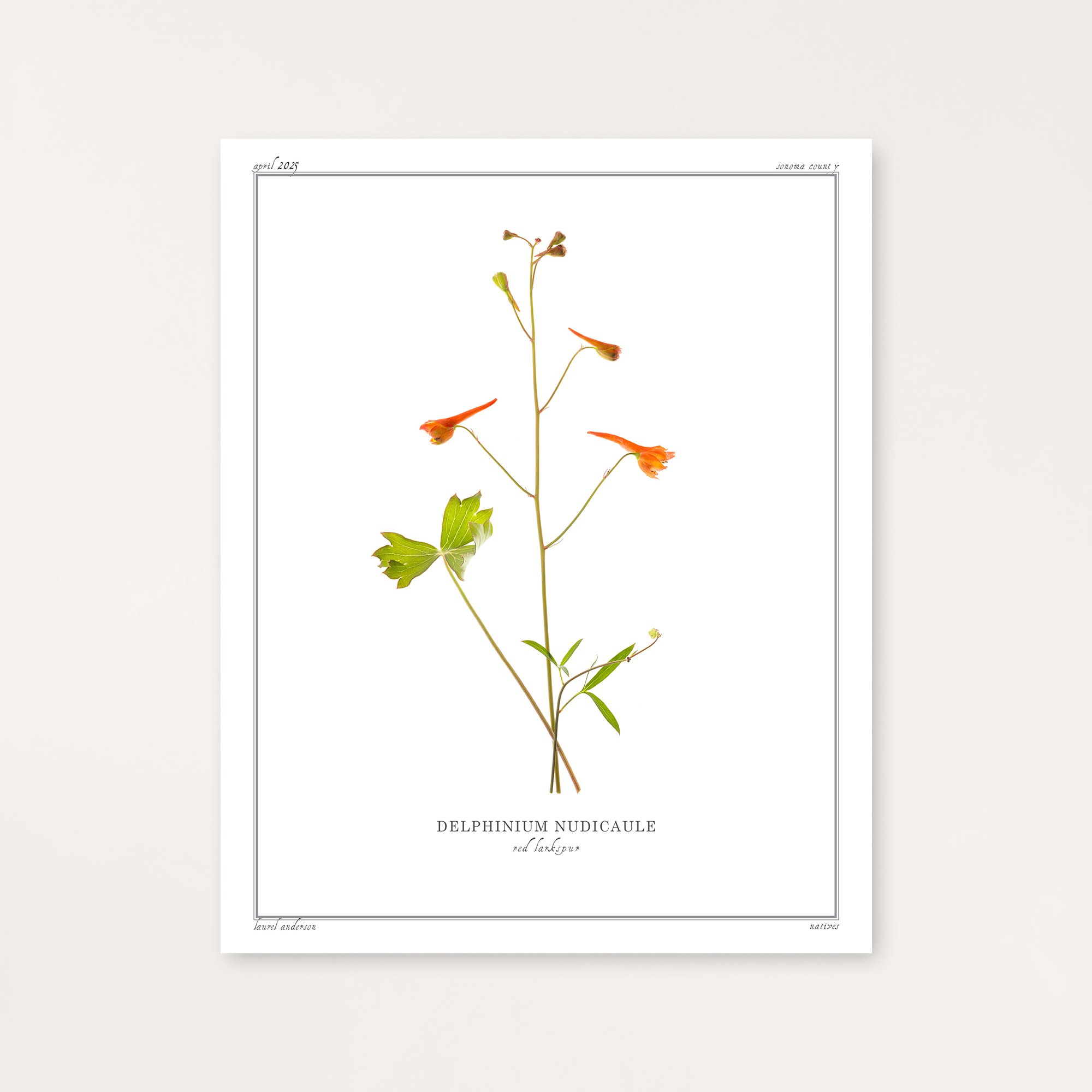 Image 1 of 2
Image 1 of 2

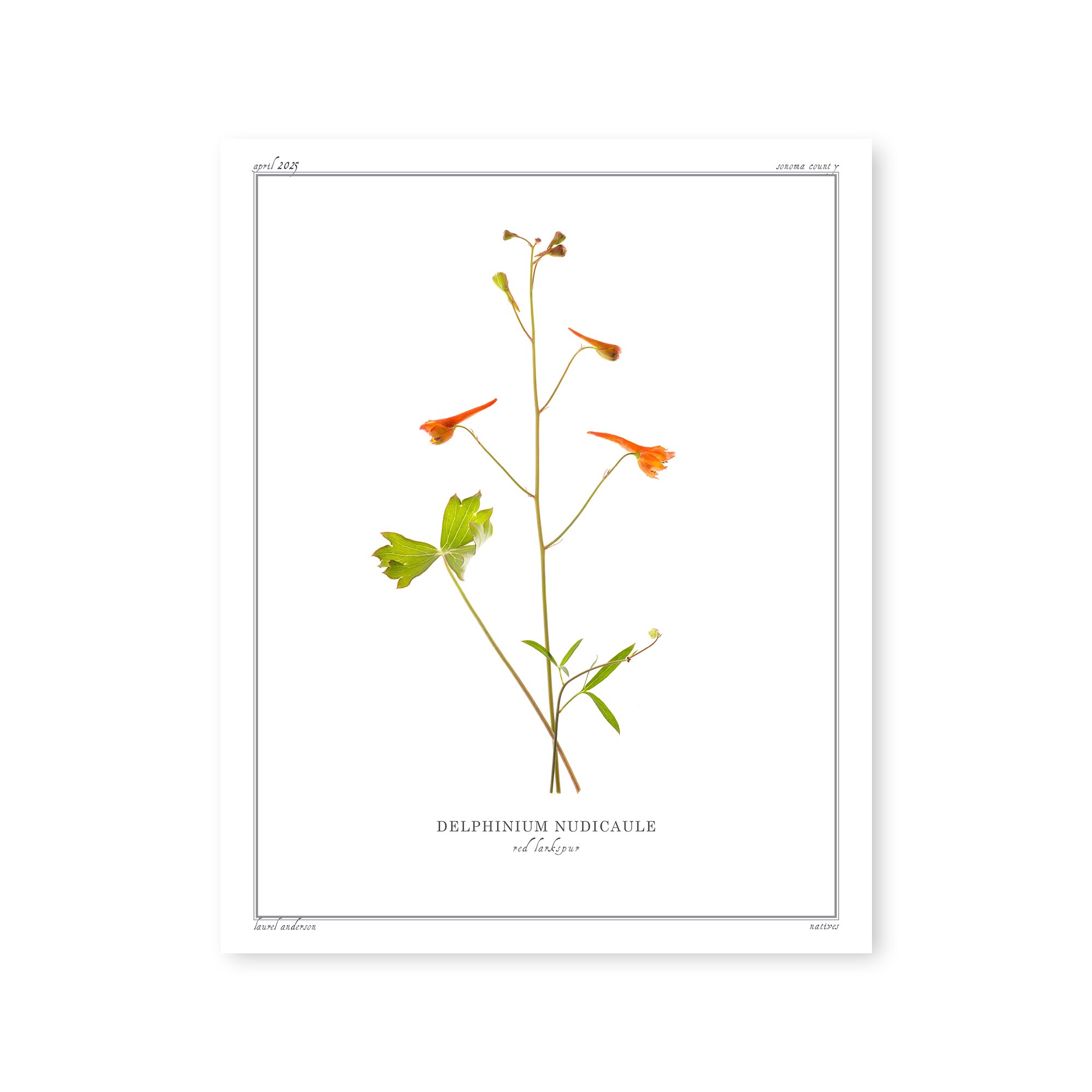 Image 2 of 2
Image 2 of 2



Red Larkspur
Red Larkspur, Delphinium nudicaule, is an eye-catching wildflower that stands out from its cousins with vibrant red to orange flowers. Found throughout Northern and Central California and parts of Oregon, it emerges in late winter to early spring, sending up thin, erect stems with few leaves and showy tubular blossoms.
Red Larkspur evolved its tubular shape and bright color specifically to attract hummingbirds, one of its key pollinators. The root of this striking plant has historical significance as a medicinal narcotic. The first phytochemical study of Red Larkspur revealed the presence of several diterpenoid alkaloids, explaining both its traditional medicinal uses and its toxicity when ingested.
Each print is made by the artist using archival quality pigment ink on Moab's Entrada Rag Bright 300 paper.
Red Larkspur, Delphinium nudicaule, is an eye-catching wildflower that stands out from its cousins with vibrant red to orange flowers. Found throughout Northern and Central California and parts of Oregon, it emerges in late winter to early spring, sending up thin, erect stems with few leaves and showy tubular blossoms.
Red Larkspur evolved its tubular shape and bright color specifically to attract hummingbirds, one of its key pollinators. The root of this striking plant has historical significance as a medicinal narcotic. The first phytochemical study of Red Larkspur revealed the presence of several diterpenoid alkaloids, explaining both its traditional medicinal uses and its toxicity when ingested.
Each print is made by the artist using archival quality pigment ink on Moab's Entrada Rag Bright 300 paper.



